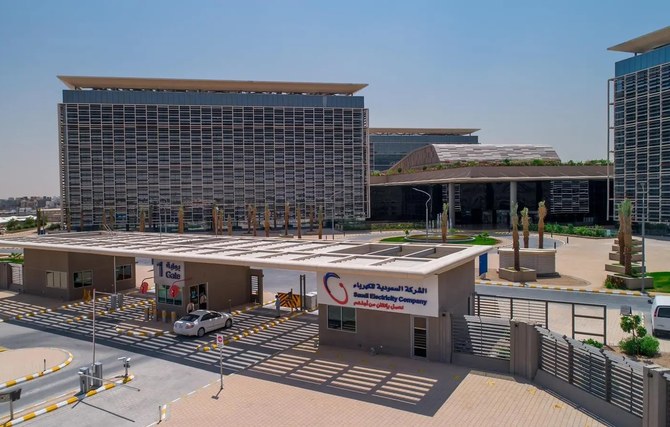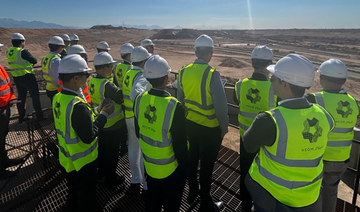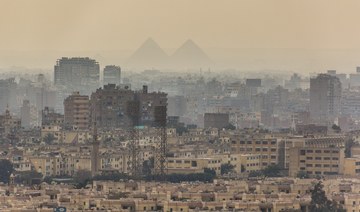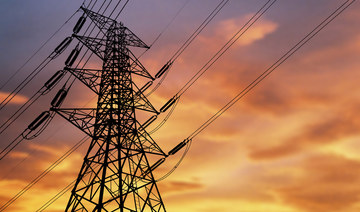NEW DELHI: Expectations were high when five big, developing nations in 2009 joined as the so-called BRICS. The cooperation of the fast-rising economies driving world growth seemed to herald a new era of putting poverty alleviation and infrastructure development first.
The five BRICS countries — Brazil, Russia, India, China and South Africa — do not lack for heft.
They represent nearly half the world’s population and a quarter of its economy, at a combined $16.6 trillion.
But at a summit in the western Indian state of Goa Saturday, their leaders will be struggling to temper their tendency to compete, rather than collaborate, in boosting their slowing economies.
The five nations face unique challenges that make coordination tricky.
The authoritarian systems in Russia and China diverge from the lively democracies in India, South Africa and Brazil.
Conflicting alliances with non-BRICS countries mean the group is unlikely to reach a consensus over issues such as the war in Syria or tensions in the South China Sea.
Within their ranks, the four other nations are chafing at China’s increasing dominance in manufacturing and trade and seem unlikely to support a push by Beijing for more open markets when they are striving to keep their own heads above water.
“BRICS is still a work in progress,” says H. H. S. Vishwanathan, a former Indian diplomat in the US and several African countries.
“If one looks at statements from the last seven summits, the agenda of the group is constantly evolving and expanding.”
Chinese academics and analysts have floated the idea of pushing for a free-trade agreement among the BRICS. A Chinese Commerce Ministry spokesman said last month that, while China hasn’t made such a proposal formally, it believes that removing tariffs and other barriers could be important for practical cooperation between the five nations.
Such an idea would likely fall flat with other BRICS countries anxious over cheap Chinese goods flooding their markets and already burdened by huge trade deficits with Beijing.
“It is likely the Chinese may not bring it up at all, because they would not want to be in an embarrassing position,” Vishwanathan said. “This is a nonstarter for the BRICS.”
In Goa, the BRICS leaders are likely to buttress their development-focused economic agenda with a decision to establish their own credit-rating agency, which they argue would treat developing countries more fairly than existing ones favoring Western economies.
They are also mulling founding a think tank to help shape international dialogues on finance.
More modest aims include easing visa restrictions for business leaders and increasing investments from China, especially for funding infrastructure projects.
“While we cannot expect any big announcement over a BRICS free trade arrangement, the Goa summit statement will reflect the desire of the five to strengthen trading arrangements to push intra-BRICS trade,” said Samir Saran, vice president of the Observer Research Foundation think tank in New Delhi and a member of the BRICS Think Tank Council.
To date, the BRICS group’s biggest achievement has been launching a financing alternative to the International Monetary Fund and World Bank intended to expand lending for infrastructure projects, initially within their countries.
The Shanghai-based New Development Bank approved its first set of loans totaling $911 million this year for renewable energy projects in the five founding member nations.
“The fact that the NDB was created in three years and has already cleared more than $900 million worth of projects this year is quite creditable,” said Vishwanathan, the former Indian diplomat.
Overshadowing the meeting in Goa is the hard reality of slowing growth around the globe.
China’s expansion has slowed to its slowest pace in 25 years, though it is still near a robust annual pace of 7 percent.
Russia has been flummoxed by declining oil prices. Brazil is just emerging from its worst recession since the 1930s. South Africa’s economic turmoil could lead to its credit rating being downgraded to junk by the year’s end.
India, with an economy growing at a 7.5 percent pace, is still failing to create the 1 million new jobs it needs each month as enormous numbers of youths join the work force.
Still, they still have the potential to alter the order of world trade, said Biswajeet Dhar, an economics professor at New Delhi’s Jawaharlal Nehru University.
Other trading arrangements, such as the WTO, are heavily influenced by the industrialized countries, he notes. And a US-led push for a Pacific Rim trade block, the Trans-Pacific Partnership, has yet to take off.
“This is the opportunity for the BRICS countries to craft a more equitable global trading order,” Dhar said.
Slower growth and rivalries key issues at BRICS summit in Goa
Slower growth and rivalries key issues at BRICS summit in Goa

Saudi private sector employment reaches 11.27m in April: official data

RIYADH: Saudi Arabia’s private sector has created more job opportunities, with the total number of employees reaching 11.27 million workers in April, official data showed.
According to the Saudi National Labor Observatory report, there was a net increase in citizen employment for April, with 18,535 individuals newly joining the private sector workforce.
Among these figures, there are over 2.35 million Saudi nationals, comprising more than 970,200 female workers and over 1.38 million male employees.
On the other hand, NLO data showed that the total number of residents employed in the private sector exceeded 8.91 million individuals, comprising over 8.55 million male workers and only 364,900 female employees.
The report provides an overview of the Saudi private sector, highlighting a dynamic workforce of over 9.9 million male workers and more than 1.3 million female workers, representing diverse nationalities and playing integral roles in sector operations.
In February, the total number of employees in the Saudi private sector reached 11.1 million, marking a 0.9 percent increase from the previous month, according to an NLO release.
The national observatory report revealed that out of the total, 2.3 million were Saudi nationals, while 8.8 million were residents of the Kingdom belonging to different nationalities.
That data reflected a positive trend in the employment industry as the private sector continues to expand its workforce, creating opportunities for Saudi citizens.
Moreover, an analysis of the Saudi national workforce revealed that while 961,690 employees were females, 1.4 million were males.
Meanwhile, among the 8.8 million non-Saudi workers, 348,892 were women, while 8.4 million were men.
In February alone, the net growth in jobs for Saudi nationals as well as residents stood at 26,694, indicating a steady increase in employment within the private sector.
Saudi Arabia’s economic diversification efforts have transformed the Kingdom into a hub for employment opportunities, propelled by bold giga-projects such as NEOM, which attract fresh talent into the construction sector.
NLO, a governmental organization, is tasked with monitoring and analyzing labor market trends and dynamics in the country. It serves as a crucial resource for policymakers, researchers, and stakeholders interested in understanding and addressing issues related to employment, workforce development, and labor market regulations.
Saudi Arabia’s NHC signs deal with Chinese company to boost building materials supply

RIYADH: Saudi Arabia’s building materials supply is set to get a boost with the signing of a deal between the National Housing Co. and a leading Chinese construction firm.
The agreement with China’s CITIC Construction Group seeks to establish an industrial city and logistic zones for building materials, comprising 12 factories, with the objective of securing supply chains for the NHC’s housing projects.
NHC CEO Mohammad Albuty finalized the deal during the official visit of Minister of Municipal and Rural Affairs and Housing Majid Al-Hogail to China.
In a statement, the NHC said the agreement with the Chinese construction group are part of its efforts to secure supply chains for its housing projects and ensure their timely completion and high quality.
The Saudi company said the deal entails the construction of 12 factories specializing in building materials, harnessing Chinese expertise, and involving local factories to uplift business standards.
It added that the deal also aims to draw top-tier service providers across various sectors of the company, its subsidiaries, and other projects.
The company pointed out that the agreement is expected to maximize the economic and developmental impact of the real estate sector in the Kingdom, develop housing projects, enhance their quality, and promote national transformation in the construction sector through these industrial cities and logistic zones.
The statement also highlighted that this collaboration will facilitate the expansion of small and medium factories in the Kingdom, establish direct production lines for the company’s projects, and foster the growth of the local industry. Additionally, it will create numerous job opportunities in the sector.
The company said the agreement strengthen the comprehensive strategic partnership between Saudi Arabia and China, established during the Chinese president’s visit to the Kingdom in December 2022.
IMF forecasts $14bn increase in Egypt’s foreign cash revenue

RIYADH: Egypt’s foreign cash revenue is projected to surge by $13.7 billion from five key sources this year, a 14.6 percent increase over last year, according to the International Monetary Fund.
This surge is largely due to investments in the Ras Al Hikma City development deal recently signed by the government with ADQ Holdings, as reported by CNBC Arabia.
The IMF projected that foreign cash inflows from these five sources for the fiscal year 2023-2024 will total around $107.3 billion, compared to about $93.6 billion in 2022-2023.
These sources encompass proceeds from commodity exports, tourism revenues, Suez Canal revenues, as well as private transfers and net foreign direct investment.
Despite expectations of an increase in foreign cash revenue from these sources this year, the IMF anticipates inflows to decrease again in the next fiscal year, dropping below the levels of the previous year to approximately $91.2 billion.
The fund forecasts foreign cash inflows from commodity exports to decline to $33.2 billion during the current fiscal year, compared to $39.6 billion last year, reflecting a decrease of about 16.2 percent, with an expected increase to $35.6 billion next year.
It also predicts a decline in Egypt’s tourism revenues during 2023-2024 to around $12 billion, compared to $13.6 billion in 2022-2023, reflecting a decrease of about 11.8 percent, with an increase to around $12.6 billion in 2024-2025.
Furthermore, the financial agency expects a decline in Suez Canal revenues during the current fiscal year to $6.8 billion, compared to $8.8 billion last year, marking a decrease of about 22.7 percent, with an anticipated increase to around $10 billion next year.
As for net private transfers from abroad, they are anticipated to increase to around $23.1 billion during 2023-2024, compared to about $21.9 billion during 2022-2023, reflecting a 5.5 percent increase, and continuing to rise to $24.6 billion in 2024-2025.
Similarly, net foreign direct investment inflows are projected to surge during the current year to around $32.2 billion, compared to $9.7 billion in the previous fiscal year, marking a 232 percent increase, and then decline next year to $8.4 billion.
SEC closes $3bn financing for 3.6GW capacity power stations

RIYADH: Saudi Arabia’s power generation is poised for a substantial boost following the successful closing of financing for two electricity projects, with a combined capacity of 3.6 gigawatts.
The deals involving the Taiba 1 and Qassim 1 independent power producer projects, with a combined financing value of SR11.4 billion ($3.04 billion), signify a major milestone in Saudi Arabia’s energy landscape, the Saudi Press Agency reported.
The two IPP projects, featuring combined cycle gas turbine technology, were awarded to the Saudi Electricity Co. by the Saudi Power Procurement Co. as part of an alliance with ACWA Power in October 2023.
Additionally, in November 2023, a 25-year power purchase agreement was signed with the SPPC for both projects, which are being developed on a build-own-operate basis.
Khalid Al-Qunun, CEO of SEC, commended the efforts of the company’s team in driving transformation in the electric energy sector in the Kingdom, the SPA report added.
He said: “These projects embody our ongoing ambitions to expand energy generation projects and adopt the latest technologies to ensure the provision of environmentally friendly energy solutions that contribute to achieving the company’s zero neutrality target by 2050, in line with the Kingdom’s ambitious aspirations in the field of energy sustainability.”
The financing agreements were signed by the two project companies: Sidra One for Electricity for the Taiba 1 station and Qudra Energy for the Qassim 1 station. The SEC holds a 40 percent share in both companies.
These modern stations represent a notable advancement in electric energy production in the Kingdom. They signify an important step toward a sustainable future by utilizing the latest energy production technologies, such as combined cycle gas turbines known for their high efficiency.
According to the SPA report, relying on these advanced technologies contributes to improving generation efficiency, reducing emissions, and reducing reliance on liquid fuels in the electricity production sector in the Kingdom.
These stations mark the beginning of a series of CCGT stations that will expedite the realization of Saudi Vision 2030 goals, including achieving an optimal energy mix and increasing local content.
This also sets the stage for achieving the goals of the Saudi Green Initiative, aiming for carbon neutrality by 2060. The engineering design of these stations allows for the future integration of carbon capture facilities, underscoring the SEC’s commitment to environmental, social, and governance responsibility, the SPA report added.
Qatar’s non-energy private sector records improvement in April

RIYADH: Qatar’s non-energy private sector witnesses improvement in business conditions in April as the Purchasing Managers’ Index hit 52, compared to 50.6 in March, according to the latest data.
The Qatar Financial Center PMI is a composite single-figure indicator of non-energy private sector performance that is derived from indicators for new orders, output, employment, suppliers’ delivery times and stocks of purchases. A reading above 50 signifies sectoral expansion, while below that mark indicates contraction.
The latest PMI survey data from the center compiled by US-based capital marker firm S&P Global showed that the 1.4-point increase between March and April in the headline figure was among the largest registered over the past two years, according to a statement.
Moreover, the data disclosed that while output, new orders, employment and purchasing activity all increased at faster rates than in March, price pressures turned slightly negative, as both input and output prices fell marginally.
Additionally, the volume of incoming new business in Qatar’s non-energy economy rose at the fastest rate in seven months in April. This is mainly attributed to new customers and high quality, competitive products.
Total activity also surged at the fastest rate since last September in April as new projects and firms continued to complete existing workloads.
Furthermore, non-energy private sector companies were increasingly optimistic on growth over the next 12 months in April. Companies residing in the Gulf country linked positive forecasts to marketing campaigns, business development plans and efficiency drives.
Consequently, stronger inflows of new work and increased confidence led to a sharper rate of hiring growth in April. Employment has risen for 14 months, and the rate of job creation was running above the long-run survey average in April.
The Qatar PMI indices are compiled from survey responses from a panel of around 450 private sector companies. The panel covers the manufacturing, construction, and wholesale as well as retail and services sectors, and reflects the structure of the non-energy economy according to official national accounts data.
Islamic banking
The total value of the assets of Islamic banks operating in Qatar during the month of March 2024 increased by 6.4 percent on an annual basis to reach about 563.9 billion Qatari riyals ($154.8 billion), according to newly released statistics.
The monetary bulletin issued by the Qatar Central Bank for the month of March showed that this recorded figure represents 28 percent of the total assets of banks in Qatar, amounting to approximately 1.99 trillion riyals.
The data also revealed that the total value of Islamic banks’ financing in Qatar increased to 389.9 billion riyals, an increase of 3 percent over the corresponding month of last year.












